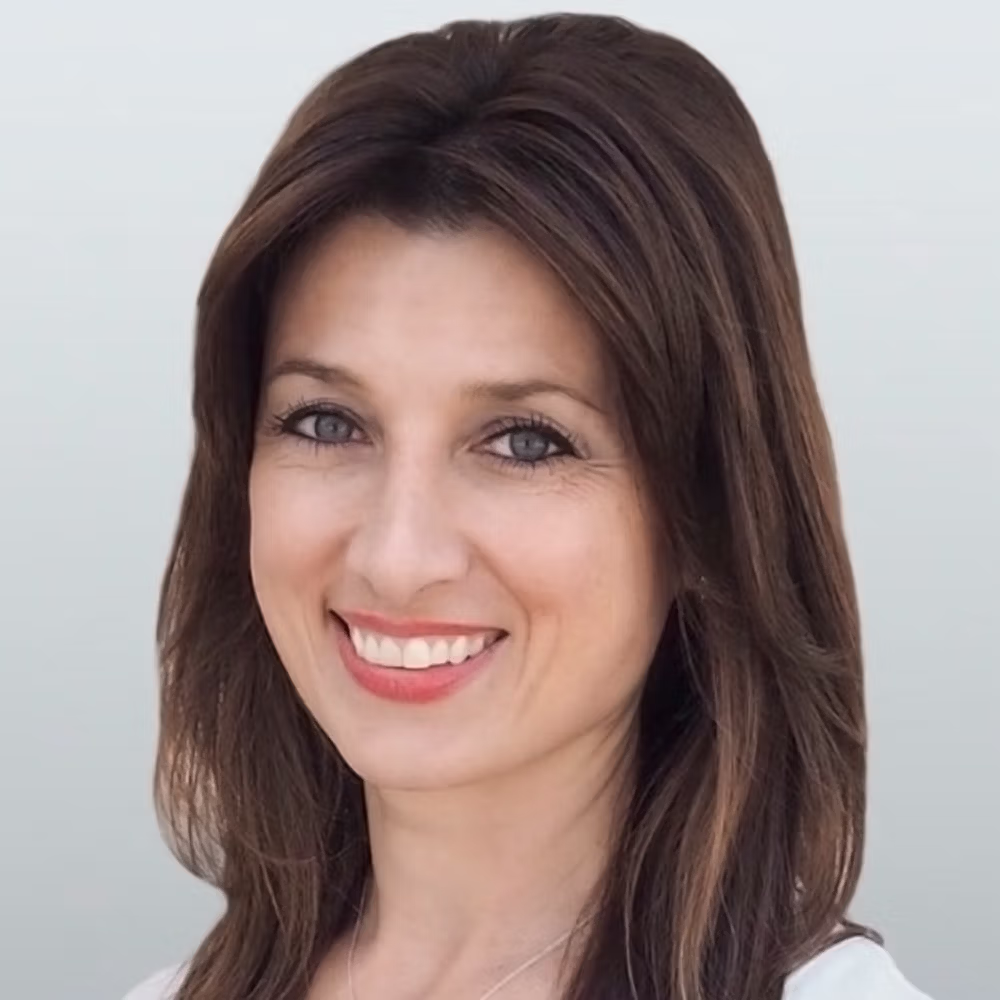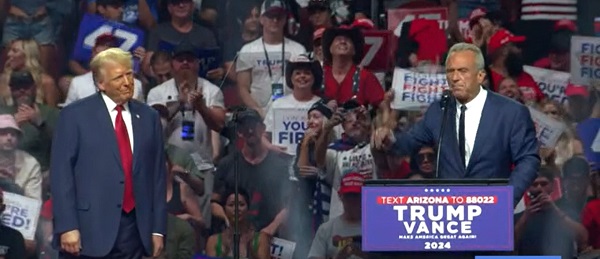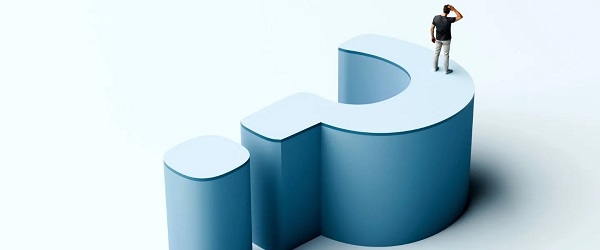Brownstone Institute
Fact-Checker, Check Thyself
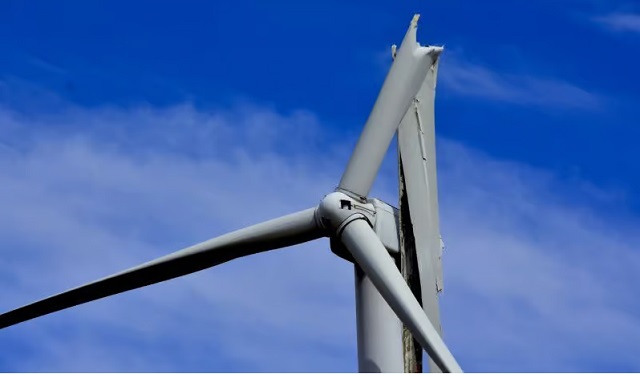
From Brownstone Institute
BY
In two articles on this site on November 13 and March 18, Andrew Lowenthal explained the intimate connections in the Virality Project between the US government, Stanford University, and Big Tech, to enforce Covid orthodoxy via the Censorship Industrial Complex. A similar collusion has operated in Australia but not, as far as we know, as an initiative of the security state.
This is the ABC RMIT Fact Check Unit. It is hosted jointly by the Royal Melbourne Institute of Technology (RMIT) that is mostly a publicly funded institution and the public broadcaster the Australian Broadcasting Corporation (ABC) that is entirely funded by the state. It describes itself rather grandiosely as a partnership that combines “academic excellence and the best of Australian journalism to inform the public through an independent non-partisan voice.” This boast has helped to provide plausible cover for enforcing the orthodoxy of the medical establishment that suffers from the delusion that it is the single source of medical scientific truth.
The self-important pretentiousness was punctured this week. During a radio interview with 2GB host Ben Fordham on March 18, businessman Dick Smith said, “No country has ever been able to run entirely on renewables – that’s impossible.” He said this in the context of advocating for nuclear power to be added to Australia’s energy mix.
The Fact Check
ABC RMIT Fact Check promptly investigated this and adjudged that “experts consulted by RMIT ABC Fact Check suggested Mr Smith’s statement doesn’t hold up.”
In a follow-up interview on 2GB on March 25, Smith was angry. “The whole document is full of misinformation and lies, it’s designed to discredit me. Absolutely disgusting,” he told Fordham. He demanded immediate corrections from the taxpayer-funded broadcaster’s fact-check unit and threatened defamation action otherwise as the verdict was damaging his credibility.
US columnist Michael Shellenberger, who played a central role in breaking the Twitter Files story, said:
The Australian government is demanding that X, Facebook, and other social media companies censor content that its fact-checkers say is inaccurate. But now, one of the government’s main fact-checker groups has been caught spreading misinformation about renewables and nuclear.
X owner billionaire Elon Musk joined in, posting that “Having government ‘fact-checkers’ is a giant leap in the direction of tyranny!”
Bizarrely, to support its negative verdict on Smith, the fact check quoted Stanford University’s Professor Mark Jacobson to the effect that California had “been running on more than 100 per cent WWS [wind-water-solar] for 10 out of the last 11 days for between 0.25 and 6 hours per day.” Similarly, the fact check cited a forecast from the Australian Energy Market Operator that renewables will be able to meet the entire demand of the national electricity market by 2025, “albeit for short periods of time (for example, 30 minutes).”
This demonstrates gross reading comprehension problems. Or is it elementary maths? If California has been relying on renewables for between 0.25 and 6 hours per day, quite clearly that confirms Smith’s claim, for renewables could not manage power needs for between 18 to 23.75 hours per day. In addition, Smith claimed subsequently, California can draw on its own and two other states’ nuclear power as base-load backup power to renewables. Nor does a 30-minute capacity indicate the ability to meet Australia’s electricity demand 24/7 for 365 days a year.
The Proliferation of Fact-Checkers
The fact-check industry came into its own during the Covid years, gained in popularity, and proliferated in numbers of organizations and individuals. However, they typically operated with little transparency and clarity on the credentials of the fact-checkers and their qualifications to adjudicate between world-renowned experts making competing claims. After all, contestation is normal in scientific discourse. Anything that cannot be questioned but relies on authority alone is dogma, not science.
A good example of this syndrome was provided to this site on March 27 by Peter Gøtzsche, co-founder of the Cochrane Collaboration and Professor of Clinical Research Design and Analysis at the University of Copenhagen, who has published more than 97 papers in the “big five” medical journals (JAMA [Journal of the American Medical Association], Lancet, New England Journal of Medicine, British Medical Journal, and Annals of Internal Medicine).
Gøtzsche had produced a video of a conversation he had with Professor Christine Stabell Benn, “one of the most outstanding vaccine researchers in the world.” On their own Broken Medical Science site, the video (published last October) is described thus:
In this episode, Peter C Gøtzsche discusses with Professor Christine Stabell Benn the research that has shown that live, attenuated vaccines reduce total mortality by much more than their specific effects would predict; that non-live vaccines increase total mortality; that the order in which the vaccines are given is important for mortality; what the harms are of the Covid-19 vaccines; and why they are overused.
After reading Martin Kulldorff’s story in the City Journal on March 11 of how he was fired by Harvard University, Gøtzsche decided to test YouTube and put up the video on March 24. It was taken down within an hour for violating its medical misinformation policy. They appealed but having “reviewed your content carefully,” YouTube “confirmed that it violates our medical misinformation policy.” Gøtzsche was very impressed that YouTube fact-checkers were able to conduct a careful and thorough review of a 54-minute conversation, involving two internationally eminent medical experts, in less than an hour.
Is it any wonder that fact-checkers were quickly discredited for several reasons. They took official claims by governments and the WHO as authoritative and true. This produced some hilarious flip-flops as the narrative on Covid changed with respect, for example, to the likely origins of the coronavirus in Wuhan’s wet market or the research laboratory in the Wuhan Institute of Virology located just a few kilometres away. Also with respect to claims that the vaccines stop infection, transmission, and death.
Second, fact-checkers were shown to have a pronounced left-liberal bias. Third, their modus operandi turned out to be to ask different experts for their reactions to the claims under investigation and then side with the experts who aligned with their own bias. Fourth and most importantly, when challenged in court Facebook’s defence in December 2021 was that fact-check pronouncements were protected “opinions” under the First Amendment.
Thorsteinn Siglaugsson was wickedly accurate in sketching the typology of fact-checking techniques. Create a straw-man argument that can be easily knocked down. Assert that a claim is not supported by evidence, is questioned by other experts, lacks context, is misleading, or is only partly true, etc. Engage in ad hominem attacks against the person rather than with their evidence and argument.
ABC RMIT Fact Check, Check Your Own Facts
Smith makes the point that the fact-checker never contacted him. He could have told them he was talking about the total energy requirements, not just electricity requirements. Professor Jacobson told Fact Check that four countries draw 100 percent of their electricity power requirements solely from renewables: Albania, Bhutan, Paraguay, and Nepal.
The first thing to note is that even the electricity consumption per capita of the four countries is substantially lower than that of Australia as an advanced industrial economy (Figure 1).
Second, none of the four countries is an island continent without the option of connecting to a geographically wider energy grid to make up for shortfalls in national energy needs. In 2021, 24.1 percent of Albania’s, 27.6 percent of Nepal’s, and 10.1 percent of Paraguay’s energy needs were met from imports.

Third, according to Our World in Data, the share of electricity production from renewables for Paraguay was 99.88 percent in 2021, and for the remaining three was 100 percent. But power for the electricity grid made up only 22, 41, 13, and 38 percent of the total energy consumption of Albania, Bhutan, Nepal, and Paraguay, respectively.

Figure 2 shows the energy mix of three countries using data from the International Energy Agency (Bhutan’s is not available from that source).
Nepal
I’d like to look in more detail at Nepal, for a simple reason. I was born and grew up in the state of Bihar just 20-30km from the border with Nepal which is an open border for citizens of the two countries. Consequently I am intimately familiar with life and communities on both sides of the border. Like people in northern Bihar, many Nepalese lack access to electricity and rely heavily on wood, agricultural waste, and dung with high CO2 emissions for their daily cooking and heating needs.
Similarly, on both sides of the border fossil fuels power the majority of transportation and diesel generators are commonly used as a power source to offset unreliable grid electricity supply. Speaking of which, a common complaint from local Indians is that Nepal imports a lot of the electricity produced in India even though India’s own power requirements are not fully met.
In other words, the ABC RMIT Fact Check conclusions were misleading, lacked context, and made false claims about what Dick Smith had said in his interview. Good to see that despite repeated insistence that it was standing by its work, late on March 26 the Fact Check unit apologized to Smith and amended its report.
But this does rather beg the question. Having stood by their verdict for over a week, ABC buckled upon receiving a letter from Smith’s lawyers. He is both a public figure with access to media and politicians and very wealthy. The founder of the successful Australia-New Zealand retail chain Dick Smith Electronics, his state honour includes the highest level of civilian recognition, the Companion of the Order of Australia (AC), awarded in 2015. Ninety-nine percent of Australians lack his reach and ability to issue credible legal threats and risk penury. Consequently his win is unlikely, on its own, to end the ABC’s attitude problem rooted in arrogance, hubris, and complacency.
An earlier version of this was published in The Epoch Times Australia on March 27.
Brownstone Institute
The Unmasking of Vaccine Science

From the Brownstone Institute
By
I recently purchased Aaron Siri’s new book Vaccines, Amen. As I flipped though the pages, I noticed a section devoted to his now-famous deposition of Dr Stanley Plotkin, the “godfather” of vaccines.
I’d seen viral clips circulating on social media, but I had never taken the time to read the full transcript — until now.
Siri’s interrogation was methodical and unflinching…a masterclass in extracting uncomfortable truths.
A Legal Showdown
In January 2018, Dr Stanley Plotkin, a towering figure in immunology and co-developer of the rubella vaccine, was deposed under oath in Pennsylvania by attorney Aaron Siri.
The case stemmed from a custody dispute in Michigan, where divorced parents disagreed over whether their daughter should be vaccinated. Plotkin had agreed to testify in support of vaccination on behalf of the father.
What followed over the next nine hours, captured in a 400-page transcript, was extraordinary.
Plotkin’s testimony revealed ethical blind spots, scientific hubris, and a troubling indifference to vaccine safety data.
He mocked religious objectors, defended experiments on mentally disabled children, and dismissed glaring weaknesses in vaccine surveillance systems.
A System Built on Conflicts
From the outset, Plotkin admitted to a web of industry entanglements.
He confirmed receiving payments from Merck, Sanofi, GSK, Pfizer, and several biotech firms. These were not occasional consultancies but long-standing financial relationships with the very manufacturers of the vaccines he promoted.
Plotkin appeared taken aback when Siri questioned his financial windfall from royalties on products like RotaTeq, and expressed surprise at the “tone” of the deposition.
Siri pressed on: “You didn’t anticipate that your financial dealings with those companies would be relevant?”
Plotkin replied: “I guess, no, I did not perceive that that was relevant to my opinion as to whether a child should receive vaccines.”
The man entrusted with shaping national vaccine policy had a direct financial stake in its expansion, yet he brushed it aside as irrelevant.
Contempt for Religious Dissent
Siri questioned Plotkin on his past statements, including one in which he described vaccine critics as “religious zealots who believe that the will of God includes death and disease.”
Siri asked whether he stood by that statement. Plotkin replied emphatically, “I absolutely do.”
Plotkin was not interested in ethical pluralism or accommodating divergent moral frameworks. For him, public health was a war, and religious objectors were the enemy.
He also admitted to using human foetal cells in vaccine production — specifically WI-38, a cell line derived from an aborted foetus at three months’ gestation.
Siri asked if Plotkin had authored papers involving dozens of abortions for tissue collection. Plotkin shrugged: “I don’t remember the exact number…but quite a few.”
Plotkin regarded this as a scientific necessity, though for many people — including Catholics and Orthodox Jews — it remains a profound moral concern.
Rather than acknowledging such sensitivities, Plotkin dismissed them outright, rejecting the idea that faith-based values should influence public health policy.
That kind of absolutism, where scientific aims override moral boundaries, has since drawn criticism from ethicists and public health leaders alike.
As NIH director Jay Bhattacharya later observed during his 2025 Senate confirmation hearing, such absolutism erodes trust.
“In public health, we need to make sure the products of science are ethically acceptable to everybody,” he said. “Having alternatives that are not ethically conflicted with foetal cell lines is not just an ethical issue — it’s a public health issue.”
Safety Assumed, Not Proven
When the discussion turned to safety, Siri asked, “Are you aware of any study that compares vaccinated children to completely unvaccinated children?”
Plotkin replied that he was “not aware of well-controlled studies.”
Asked why no placebo-controlled trials had been conducted on routine childhood vaccines such as hepatitis B, Plotkin said such trials would be “ethically difficult.”
That rationale, Siri noted, creates a scientific blind spot. If trials are deemed too unethical to conduct, then gold-standard safety data — the kind required for other pharmaceuticals — simply do not exist for the full childhood vaccine schedule.
Siri pointed to one example: Merck’s hepatitis B vaccine, administered to newborns. The company had only monitored participants for adverse events for five days after injection.
Plotkin didn’t dispute it. “Five days is certainly short for follow-up,” he admitted, but claimed that “most serious events” would occur within that time frame.
Siri challenged the idea that such a narrow window could capture meaningful safety data — especially when autoimmune or neurodevelopmental effects could take weeks or months to emerge.
Siri pushed on. He asked Plotkin if the DTaP and Tdap vaccines — for diphtheria, tetanus and pertussis — could cause autism.
“I feel confident they do not,” Plotkin replied.
But when shown the Institute of Medicine’s 2011 report, which found the evidence “inadequate to accept or reject” a causal link between DTaP and autism, Plotkin countered, “Yes, but the point is that there were no studies showing that it does cause autism.”
In that moment, Plotkin embraced a fallacy: treating the absence of evidence as evidence of absence.
“You’re making assumptions, Dr Plotkin,” Siri challenged. “It would be a bit premature to make the unequivocal, sweeping statement that vaccines do not cause autism, correct?”
Plotkin relented. “As a scientist, I would say that I do not have evidence one way or the other.”
The MMR
The deposition also exposed the fragile foundations of the measles, mumps, and rubella (MMR) vaccine.
When Siri asked for evidence of randomised, placebo-controlled trials conducted before MMR’s licensing, Plotkin pushed back: “To say that it hasn’t been tested is absolute nonsense,” he said, claiming it had been studied “extensively.”
Pressed to cite a specific trial, Plotkin couldn’t name one. Instead, he gestured to his own 1,800-page textbook: “You can find them in this book, if you wish.”
Siri replied that he wanted an actual peer-reviewed study, not a reference to Plotkin’s own book. “So you’re not willing to provide them?” he asked. “You want us to just take your word for it?”
Plotkin became visibly frustrated.
Eventually, he conceded there wasn’t a single randomised, placebo-controlled trial. “I don’t remember there being a control group for the studies, I’m recalling,” he said.
The exchange foreshadowed a broader shift in public discourse, highlighting long-standing concerns that some combination vaccines were effectively grandfathered into the schedule without adequate safety testing.
In September this year, President Trump called for the MMR vaccine to be broken up into three separate injections.
The proposal echoed a view that Andrew Wakefield had voiced decades earlier — namely, that combining all three viruses into a single shot might pose greater risk than spacing them out.
Wakefield was vilified and struck from the medical register. But now, that same question — once branded as dangerous misinformation — is set to be re-examined by the CDC’s new vaccine advisory committee, chaired by Martin Kulldorff.
The Aluminium Adjuvant Blind Spot
Siri next turned to aluminium adjuvants — the immune-activating agents used in many childhood vaccines.
When asked whether studies had compared animals injected with aluminium to those given saline, Plotkin conceded that research on their safety was limited.
Siri pressed further, asking if aluminium injected into the body could travel to the brain. Plotkin replied, “I have not seen such studies, no, or not read such studies.”
When presented with a series of papers showing that aluminium can migrate to the brain, Plotkin admitted he had not studied the issue himself, acknowledging that there were experiments “suggesting that that is possible.”
Asked whether aluminium might disrupt neurological development in children, Plotkin stated, “I’m not aware that there is evidence that aluminum disrupts the developmental processes in susceptible children.”
Taken together, these exchanges revealed a striking gap in the evidence base.
Compounds such as aluminium hydroxide and aluminium phosphate have been injected into babies for decades, yet no rigorous studies have ever evaluated their neurotoxicity against an inert placebo.
This issue returned to the spotlight in September 2025, when President Trump pledged to remove aluminium from vaccines, and world-leading researcher Dr Christopher Exley renewed calls for its complete reassessment.
A Broken Safety Net
Siri then turned to the reliability of the Vaccine Adverse Event Reporting System (VAERS) — the primary mechanism for collecting reports of vaccine-related injuries in the United States.
Did Plotkin believe most adverse events were captured in this database?
“I think…probably most are reported,” he replied.
But Siri showed him a government-commissioned study by Harvard Pilgrim, which found that fewer than 1% of vaccine adverse events are reported to VAERS.
“Yes,” Plotkin said, backtracking. “I don’t really put much faith into the VAERS system…”
Yet this is the same database officials routinely cite to claim that “vaccines are safe.”
Ironically, Plotkin himself recently co-authored a provocative editorial in the New England Journal of Medicine, conceding that vaccine safety monitoring remains grossly “inadequate.”
Experimenting on the Vulnerable
Perhaps the most chilling part of the deposition concerned Plotkin’s history of human experimentation.
“Have you ever used orphans to study an experimental vaccine?” Siri asked.
“Yes,” Plotkin replied.
“Have you ever used the mentally handicapped to study an experimental vaccine?” Siri asked.
“I don’t recollect…I wouldn’t deny that I may have done so,” Plotkin replied.
Siri cited a study conducted by Plotkin in which he had administered experimental rubella vaccines to institutionalised children who were “mentally retarded.”
Plotkin stated flippantly, “Okay well, in that case…that’s what I did.”
There was no apology, no sign of ethical reflection — just matter-of-fact acceptance.
Siri wasn’t done.
He asked if Plotkin had argued that it was better to test on those “who are human in form but not in social potential” rather than on healthy children.
Plotkin admitted to writing it.
Siri established that Plotkin had also conducted vaccine research on the babies of imprisoned mothers, and on colonised African populations.
Plotkin appeared to suggest that the scientific value of such studies outweighed the ethical lapses—an attitude that many would interpret as the classic ‘ends justify the means’ rationale.
But that logic fails the most basic test of informed consent. Siri asked whether consent had been obtained in these cases.
“I don’t remember…but I assume it was,” Plotkin said.
Assume?
This was post-Nuremberg research. And the leading vaccine developer in America couldn’t say for sure whether he had properly informed the people he experimented on.
In any other field of medicine, such lapses would be disqualifying.
A Casual Dismissal of Parental Rights
Plotkin’s indifference to experimenting on disabled children didn’t stop there.
Siri asked whether someone who declined a vaccine due to concerns about missing safety data should be labelled “anti-vax.”
Plotkin replied, “If they refused to be vaccinated themselves or refused to have their children vaccinated, I would call them an anti-vaccination person, yes.”
Plotkin was less concerned about adults making that choice for themselves, but he had no tolerance for parents making those choices for their own children.
“The situation for children is quite different,” said Plotkin, “because one is making a decision for somebody else and also making a decision that has important implications for public health.”
In Plotkin’s view, the state held greater authority than parents over a child’s medical decisions — even when the science was uncertain.
The Enabling of Figures Like Plotkin
The Plotkin deposition stands as a case study in how conflicts of interest, ideology, and deference to authority have corroded the scientific foundations of public health.
Plotkin is no fringe figure. He is celebrated, honoured, and revered. Yet he promotes vaccines that have never undergone true placebo-controlled testing, shrugs off the failures of post-market surveillance, and admits to experimenting on vulnerable populations.
This is not conjecture or conspiracy — it is sworn testimony from the man who helped build the modern vaccine program.
Now, as Health Secretary Robert F. Kennedy, Jr. reopens long-dismissed questions about aluminium adjuvants and the absence of long-term safety studies, Plotkin’s once-untouchable legacy is beginning to fray.
Republished from the author’s Substack
Brownstone Institute
Bizarre Decisions about Nicotine Pouches Lead to the Wrong Products on Shelves

From the Brownstone Institute
A walk through a dozen convenience stores in Montgomery County, Pennsylvania, says a lot about how US nicotine policy actually works. Only about one in eight nicotine-pouch products for sale is legal. The rest are unauthorized—but they’re not all the same. Some are brightly branded, with uncertain ingredients, not approved by any Western regulator, and clearly aimed at impulse buyers. Others—like Sweden’s NOAT—are the opposite: muted, well-made, adult-oriented, and already approved for sale in Europe.
Yet in the United States, NOAT has been told to stop selling. In September 2025, the Food and Drug Administration (FDA) issued the company a warning letter for offering nicotine pouches without marketing authorization. That might make sense if the products were dangerous, but they appear to be among the safest on the market: mild flavors, low nicotine levels, and recyclable paper packaging. In Europe, regulators consider them acceptable. In America, they’re banned. The decision looks, at best, strange—and possibly arbitrary.
What the Market Shows
My October 2025 audit was straightforward. I visited twelve stores and recorded every distinct pouch product visible for sale at the counter. If the item matched one of the twenty ZYN products that the FDA authorized in January, it was counted as legal. Everything else was counted as illegal.
Two of the stores told me they had recently received FDA letters and had already removed most illegal stock. The other ten stores were still dominated by unauthorized products—more than 93 percent of what was on display. Across all twelve locations, about 12 percent of products were legal ZYN, and about 88 percent were not.
The illegal share wasn’t uniform. Many of the unauthorized products were clearly high-nicotine imports with flashy names like Loop, Velo, and Zimo. These products may be fine, but some are probably high in contaminants, and a few often with very high nicotine levels. Others were subdued, plainly meant for adult users. NOAT was a good example of that second group: simple packaging, oat-based filler, restrained flavoring, and branding that makes no effort to look “cool.” It’s the kind of product any regulator serious about harm reduction would welcome.
Enforcement Works
To the FDA’s credit, enforcement does make a difference. The two stores that received official letters quickly pulled their illegal stock. That mirrors the agency’s broader efforts this year: new import alerts to detain unauthorized tobacco products at the border (see also Import Alert 98-06), and hundreds of warning letters to retailers, importers, and distributors.
But effective enforcement can’t solve a supply problem. The list of legal nicotine-pouch products is still extremely short—only a narrow range of ZYN items. Adults who want more variety, or stores that want to meet that demand, inevitably turn to gray-market suppliers. The more limited the legal catalog, the more the illegal market thrives.
Why the NOAT Decision Appears Bizarre
The FDA’s own actions make the situation hard to explain. In January 2025, it authorized twenty ZYN products after finding that they contained far fewer harmful chemicals than cigarettes and could help adult smokers switch. That was progress. But nine months later, the FDA has approved nothing else—while sending a warning letter to NOAT, arguably the least youth-oriented pouch line in the world.
The outcome is bad for legal sellers and public health. ZYN is legal; a handful of clearly risky, high-nicotine imports continue to circulate; and a mild, adult-market brand that meets European safety and labeling rules is banned. Officially, NOAT’s problem is procedural—it lacks a marketing order. But in practical terms, the FDA is punishing the very design choices it claims to value: simplicity, low appeal to minors, and clean ingredients.
This approach also ignores the differences in actual risk. Studies consistently show that nicotine pouches have far fewer toxins than cigarettes and far less variability than many vapes. The biggest pouch concerns are uneven nicotine levels and occasional traces of tobacco-specific nitrosamines, depending on manufacturing quality. The serious contamination issues—heavy metals and inconsistent dosage—belong mostly to disposable vapes, particularly the flood of unregulated imports from China. Treating all “unauthorized” products as equally bad blurs those distinctions and undermines proportional enforcement.
A Better Balance: Enforce Upstream, Widen the Legal Path
My small Montgomery County survey suggests a simple formula for improvement.
First, keep enforcement targeted and focused on suppliers, not just clerks. Warning letters clearly change behavior at the store level, but the biggest impact will come from auditing distributors and importers, and stopping bad shipments before they reach retail shelves.
Second, make compliance easy. A single-page list of authorized nicotine-pouch products—currently the twenty approved ZYN items—should be posted in every store and attached to distributor invoices. Point-of-sale systems can block barcodes for anything not on the list, and retailers could affirm, once a year, that they stock only approved items.
Third, widen the legal lane. The FDA launched a pilot program in September 2025 to speed review of new pouch applications. That program should spell out exactly what evidence is needed—chemical data, toxicology, nicotine release rates, and behavioral studies—and make timely decisions. If products like NOAT meet those standards, they should be authorized quickly. Legal competition among adult-oriented brands will crowd out the sketchy imports far faster than enforcement alone.
The Bottom Line
Enforcement matters, and the data show it works—where it happens. But the legal market is too narrow to protect consumers or encourage innovation. The current regime leaves a few ZYN products as lonely legal islands in a sea of gray-market pouches that range from sensible to reckless.
The FDA’s treatment of NOAT stands out as a case study in inconsistency: a quiet, adult-focused brand approved in Europe yet effectively banned in the US, while flashier and riskier options continue to slip through. That’s not a public-health victory; it’s a missed opportunity.
If the goal is to help adult smokers move to lower-risk products while keeping youth use low, the path forward is clear: enforce smartly, make compliance easy, and give good products a fair shot. Right now, we’re doing the first part well—but failing at the second and third. It’s time to fix that.
-

 National1 day ago
National1 day agoCanada’s free speech record is cracking under pressure
-
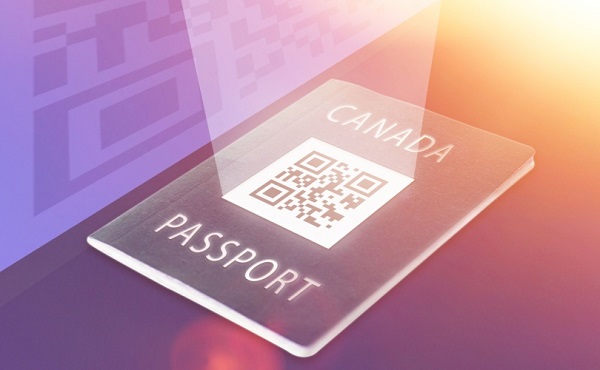
 Digital ID18 hours ago
Digital ID18 hours agoCanada considers creating national ID system using digital passports for domestic use
-

 Business1 day ago
Business1 day agoAlbertans give most on average but Canadian generosity hits lowest point in 20 years
-

 Crime2 days ago
Crime2 days agoU.S. seizes Cuba-bound ship with illicit Iranian oil history
-
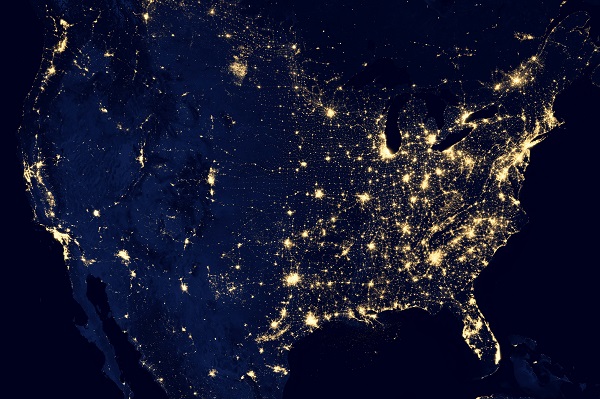
 Daily Caller2 days ago
Daily Caller2 days agoUS Supreme Court Has Chance To End Climate Lawfare
-
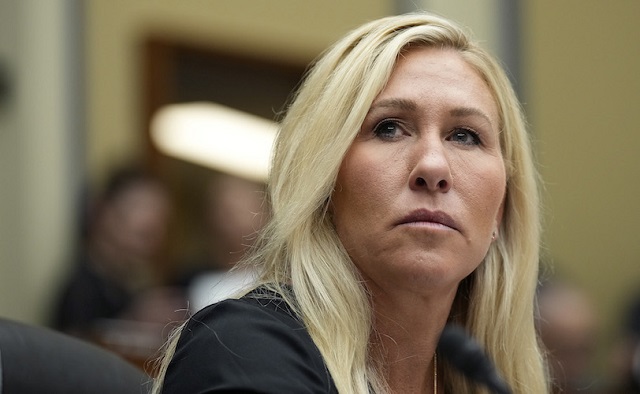
 International2 days ago
International2 days agoMarjorie Taylor Greene’s ’60 Minutes’ interview reveals power struggle between populists and RINOs
-

 COVID-192 days ago
COVID-192 days agoTrump DOJ seeks to quash Pfizer whistleblower’s lawsuit over COVID shots
-

 Business1 day ago
Business1 day agoTaxpayers Federation calls on politicians to reject funding for new Ottawa Senators arena



